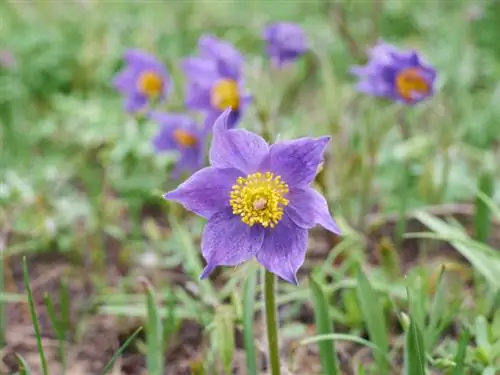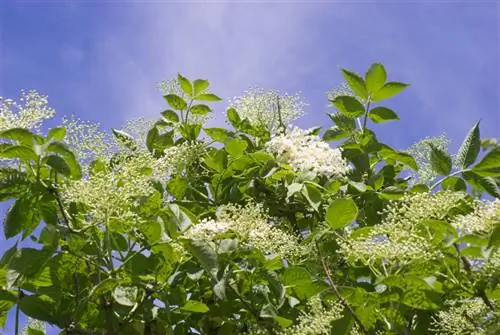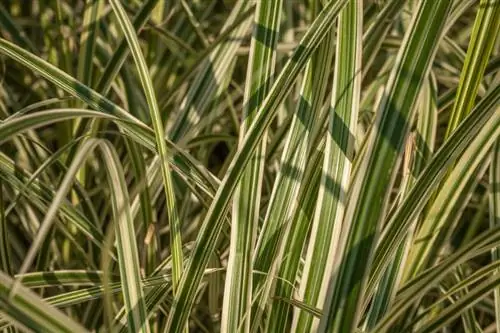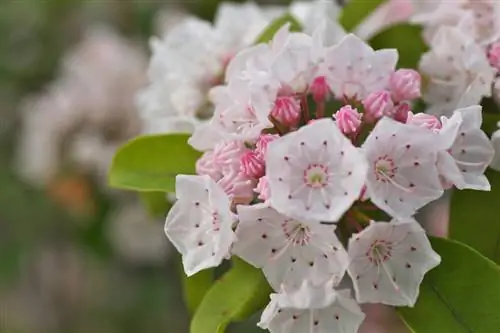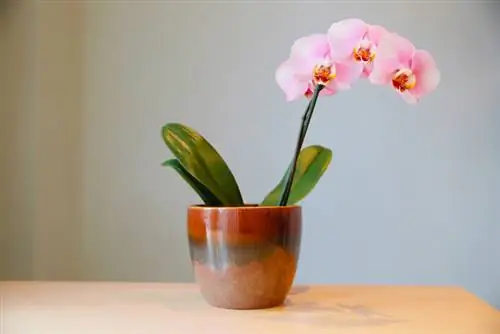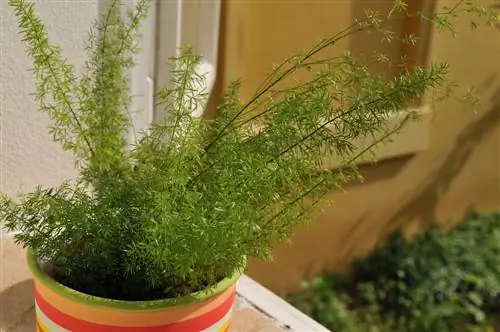- Author admin [email protected].
- Public 2023-12-16 16:46.
- Last modified 2025-01-23 11:20.
Thanks to its delicate silver hair and intense flower coloring, the pasqueflower is a wonderful highlight in the spring garden. The plant from the buttercup family is relatively easy to care for and easy to cultivate.
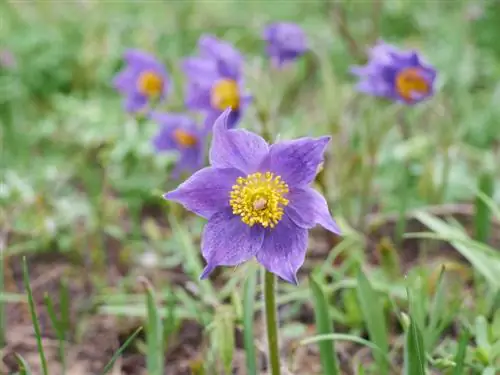
How do you care for a pasqueflower in the garden?
Caring for the pasque flower includes sparing watering, no fertilizer, cutting back anything that has faded, protection from competitive pressure and attention to the frost protection ability of the plant hairs. Pests and diseases are rare, but root rot is possible when waterlogged.
Water requirements of the pasqueflower
Pulsatilla doesn't like it too wet and only needs regular watering during long dry periods. If you care for a pasque flower in a pot, you must always water when the top centimeters of the substrate feel dry.
Avoid waterlogging in both the bed and the pot, as the pasqueflower reacts extremely sensitively to too much water.
Fertilize
The pasqueflower is a poor feeder and generally does not require any fertilizer.
Cutting
Always cut off dead flowers straight away. This causes Pulsatilla to grow new calyxes and bloom a second time. In contrast to many other perennials, the pasqueflower is not cut back in autumn. The plant's hairs act like a winter coat and protect the pasqueflower from frost damage.
Only in early spring before the start of the new growing season can you cut the Pulsatilla back to the ground and remove the previous year's leaves. However, this is not absolutely necessary.
Pests and diseases
The pasque flower is one of the most robust perennials and is almost never attacked by pests or diseases. Only root rot, which often occurs when there is waterlogging, can cause so much damage to the plant that it dies.
Avoid competitive pressure
The pasqueflower is not particularly assertive. If neighboring plants harass the pasque flower too much, it will worry and eventually disappear completely. Therefore, always plant Pulsatilla at a sufficient distance from other perennials. Cut them back in good time so as not to endanger the vigorous growth of the pasqueflower.
Tip
Wild pasque flowers are becoming increasingly rare and are protected. For this reason, you should under no circumstances transplant wild plants into the garden. For this reason and also because of the plant's toxicity, picking pasque flowers should also be avoided.

